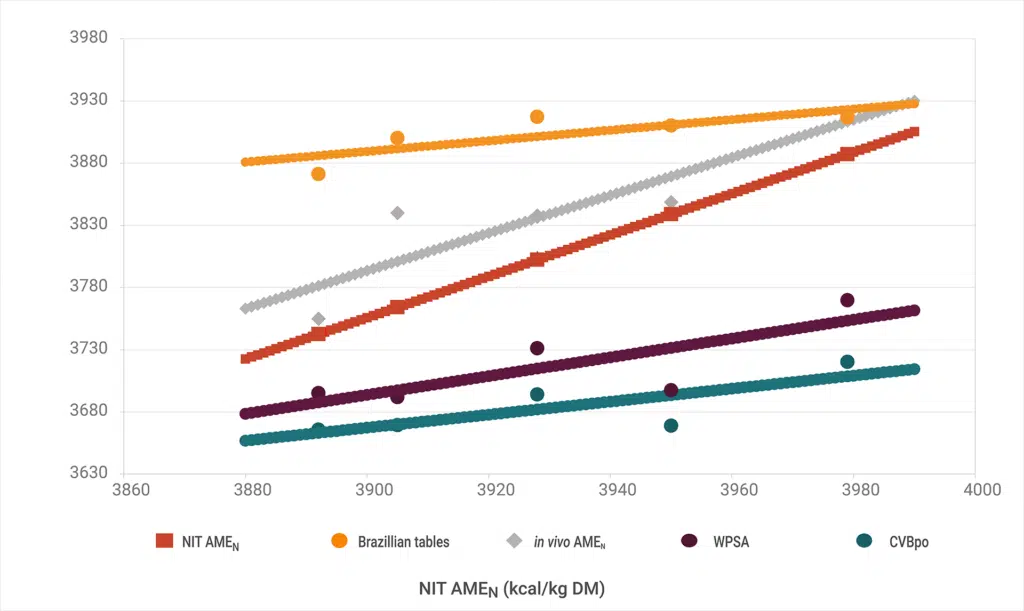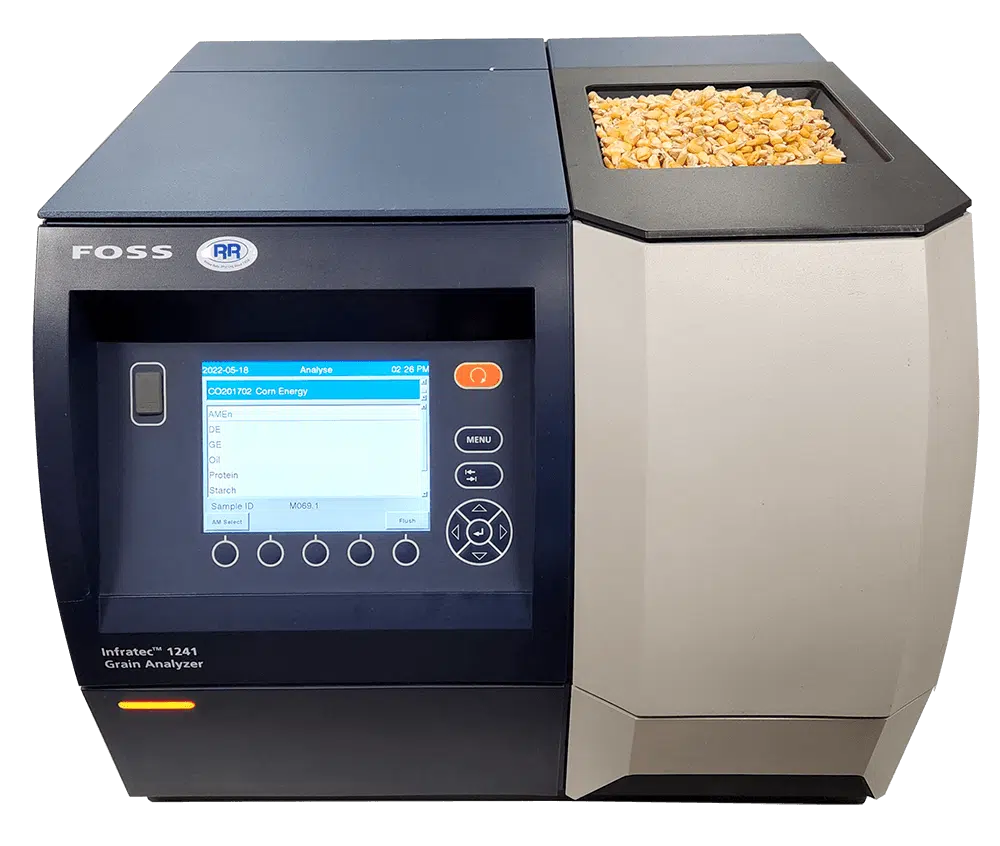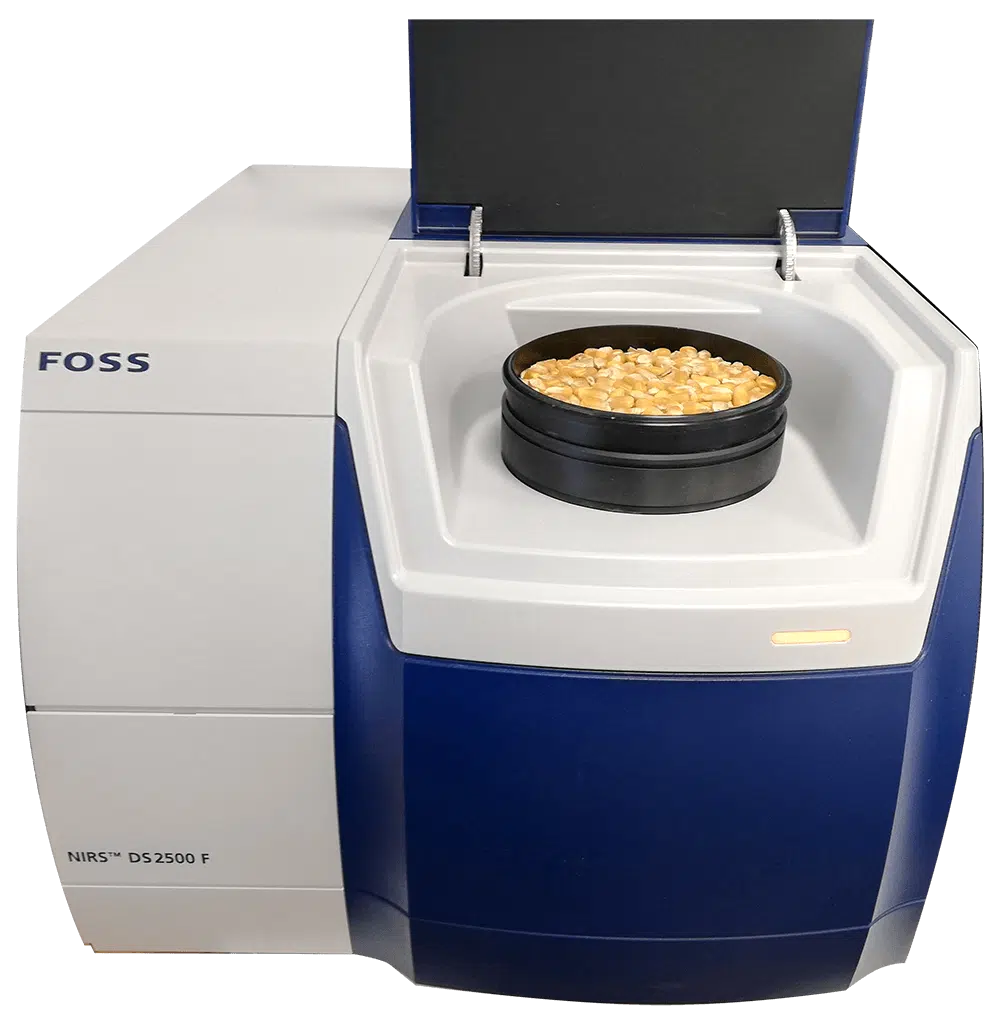Maize contributes more than 50% of the apparent metabolisable energy (AME), corrected to zero-nitrogen retention (AMEN), in poultry diets and accurate predictions are essential to improving feed cost and performance. Our new, innovative maize quality analysis service will assist you in understanding the maize quality from the new harvest season.
The models we use to predict AMEN are robust and highly accurate, taking advantage of Danisco and Pioneer’s extensive experience in understanding maize quality. This affords us the opportunity to choose specific maize samples from a large maize sample database to build reliable calibrations. We have recently conducted further research in partnership with Danisco to validate and improve the AMEN calibration using two different methods to determine in vivo AMEN.

As part of our ongoing research to understand maize quality, we have also developed NIR calibrations for milling index (MI) and grit yield all (GYA). Milling index indicates the relative ratio of total hard endosperm products (grits, fine grits, and coarse grits) to offal products (fine flour and total chop/bran), and GYA is linearly correlated with the MI and indicates the true amount of total hard endosperm that can be extracted from the maize. We have seen that MI and GYA are influential in determining the feeding value of maize.
Our NIT has two calibrations* for maize energy, nitrogen-corrected AME (AMEN), and digestible energy (DE), which are based on direct calibrations from >300 maize samples fed to broilers in vivo.
*Pioneer Seeds (Danisco Animal Nutrition) developed a method to predict the AMEN of maize directly using NIT spectroscopy. This was done by selecting over 300 maize samples from different countries that differed in their chemical and physical characteristics. The AMEN of these samples was then determined in vivo, while the same sample was scanned using an NIT instrument. Prediction equations were then developed that showed that this NIT technology could accurately predict the AMEN of maize, with a standard error of prediction of less than 10 kcal/kg maize.


NIR instruments and capabilities
The NIR calibration for maize proximates includes samples from various parts of Africa and is well maintained; we also have calibrations for various other raw materials. We can currently analyse for the following parameters:
- Fat
- Protein
- Starch
- Crude fibre
- Moisture
- Ash
Taking the guesswork out of enzyme matrix values
Sources of maize with similar proximate composition may vary in their digestible energy content and in their responsiveness to exogenous enzymes included in feed. To apply a more substrate-based approach to the determination of enzyme matrix values that are based on maize quality, AvicheckTM Corn was developed by Danisco Animal Nutrition to predict the expected response to a combination of XAP enzymes. The model incorporates the in vitro rate of starch digestion (RSD60) and Promatest to calculate the energy-improvement-with-enzymes-value (EIV).
The Promatest is a method of measurement that allows us to assess the intensity of the thermal shock received by grain during the drying process. This test, which is a good indicator of separation between protein and starch, is used by the starch industry to monitor starch quality. Promatest has a very strong contribution to the EIV and maize samples with higher Promatest values are of good quality and will therefore naturally result in smaller energy contributions from exogenous enzymes.
RSD60 is an in vitro assay to mimic digestion in the chicken. The method consists of subjecting a sample (maize or diet) to pepsin and HCL, followed by pancreatic amylase for a period of one hour (RSD60), and measurement of the number of glucose monomers and polymers formed. This measurement indicates the responsiveness of the sample to amylase (endogenous and supplemented).
In order to accurately evaluate your maize, we suggest that five whole and five milled samples be drawn over five days, thereby submitting a total of 10 samples. All analyses are performed in-house at the Chemuniqué laboratories in Lanseria. Analysis turnaround time is estimated to be between 5–7 working days from date of delivery.
Contact the Chemuniqué laboratory at chem.lab@chemunique.co.za for more information about this innovative maize quality analysis service, or read more here.
Success in animal protein production has a lot to do with understanding the nutritive value of major feed ingredients, including maize. Applying the most accurate nutritive values, and more specifically energy values, enables producers to make significant improvements in profitability.
Intern: Poultry











Excellent, Sibong, and well done, this is a great service to be offering.